Here’s How You Can Reduce Your H2O Footprint
10 minutes read
Water: we take it for granted. Taps running, hosepipe and sprinklers summer-ready, power spa showers and long leisurely baths – the average person in the western world now uses over 140 litres of water a day. Gulp.
Access to clean water is a human right, but on the flipside to our western consumptions, one in nine of the world’s population does not have access to it. By 2050, around five billion people will be affected by water shortage, which will cause conflict and societal threats unless action is taken, the UN report warns.
“Fortunately, there are many ways to reduce our water footprint. Water is everywhere and hidden in our consumption and in our ways of living. If we become more aware of where it is, it’s quite easy for us to do something about it,” Daniella Bostrom Couffe, who has worked with global development organisations, including UN-Water and World Water Council, tells Beauty Daily.
We can all take small everyday steps, which, collectively, can make a significant impact.
In light of World Water Day, Beauty Daily speaks to environmentalists, climate scientists and leaders of global organisations, such as UN-Water and UNESCO, to discuss why we should not just observe World Water Day but take profound lifestyle changes. We also list 10 practical ways to reduce your everyday water footprint.
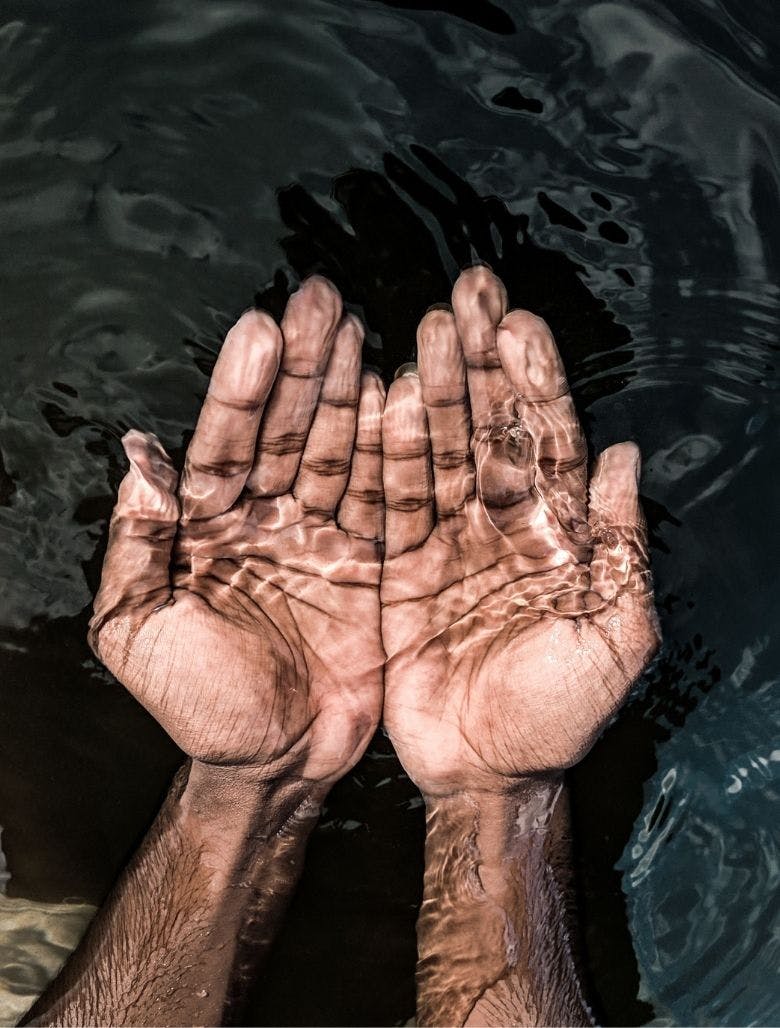
What is the theme for World Water Day 2022?
This year’s World Water Day (WWD) theme is “‘Groundwater: Making the invisible visible.”
Did you know that almost all the liquid fresh water in the world is underground?
Here’s the catch: 97% of the Earth’s water is found in oceans (saltwater) and only 3% is freshwater. And it doesn’t end here: most freshwater is unavailable, as it exists in glaciers, polar ice caps, atmosphere, and soil.
This leaves us with 0.5% of Earth’s water ready for everyday consumption: drinking, agricultural, etc. This is deteriorating as we speak. Check the faucet for leaks, quick!
According to the World Life Organisation, rivers, lakes and aquifers are drying up or becoming too polluted to use. In addition, climate change is altering patterns of weather and water around the world.
If we don’t do something about it, experts say, in the next three years, around 66% of the world’s population may face water shortages and ecosystems will continue to suffer.
“Our biggest future challenge will be water security: too much, too little, too polluted, too inaccessible. We need to understand the fundamentals of how the water cycle works and how people interact with water for the sustainable management of precious and finite water resources. If we don’t solve the world’s water problems, our future is in peril,” says Professor David Hannah, UNESCO Chair in Water Sciences and Professor of Hydrology at University of Birmingham.
Why should we take World Water Day seriously?
“Water is essential to life on earth. We use water for everything: to nourish and replenish our bodies, agriculture, fun recreational activities, hygiene, and more,” says Washington based Jasmine Sanders, Climate Scientist and Executive Director of Our Climate.
Ensuring it lasts and serves future generations and all the living beings that coexist with us is in our hands.
Which industries consume the most water and why should we care?
1. Agriculture
The agriculture industry consumes the most water: 70%.
2. Electricity
People don’t often think of lights, electronics, and appliances as major water consumers, but energy production is the world’s second-largest consumer of freshwater resources.
3. Fashion
Although great strides are being made by the likes of Stella McCartney and the Ellen MacArthur Foundation, some of the fast-fashion brands are still considered the big guzzlers. Textile production consume enough water to fill 32 million Olympic-size pools every year.
With the effects of climate change, the rise of zero waste movements and the coronavirus outbreak, beauty consumers are interested in purchasing from environmentally friendly and planet-conscious brands.
Today, companies are committed to making a change and doing their bit to combat climate change. But long before sustainability became a thing, Clarins has had a strong commitment towards caring for the environment.
To date, 100% of the electricity used in Clarins’ sites worldwide comes from renewable energy. The brand has been carbon neutral since 2020, aiming to further reduce its carbon footprint by 30%, and achieve a B-corp certification by 2023.
A B-corp certification is given to profit organisations and businesses that meet high standards of social and environmental performance.
Clarins also became the first cosmetics industry player to commit with NEOLINE, wind-powered transatlantic shipping, in its project for a more environmentally-friendly freight. This will allow a 90% reduction in CO2 emissions related to shipping goods in transatlantic lines, compared to a conventional ship of the same size.
How can we take part in World Water Day?
Couffe urges people to celebrate World Water Day to learn more about water, create activities around it that encourage people, including children, to participate, and drive awareness.
“World Water Day is an excellent opportunity to learn more about water and what we can do about the challenge. Over the years, I have seen so many amazing activities take place on this day and how the people behind them inspire others.
For example a group of NGOs raced in Singapore to raise money and awareness; women marched in South Africa, students in São Paulo ran a drawing competition on the best ways to reduce one’s water footprint and a school in Stockholm educated parents about the relationship between water and food in the household,” she says.
There are simple ways to inspire people to do the same. It starts with you, your household, and the next thing you know you’ve inspired your whole community.
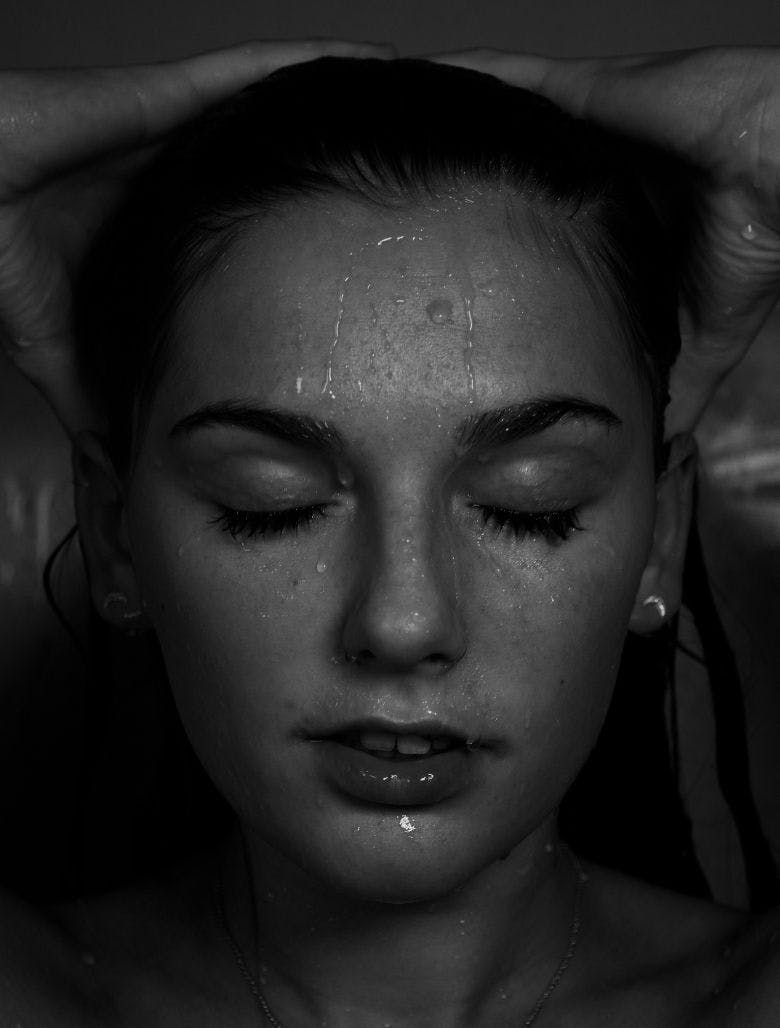
Here are 10 ways you can do to reduce your H20 footprint
1. Take shorter showers and install water-saving showerheads
If possible, take a shower instead of a bath. The Water Services Regulation Authority recommends taking a quick shower. A five-minute shower uses about 40 litres of water. This is about half the volume of a standard bath.
Experts say while a quick shower is usually more water-efficient than a bath, some high-volume power showers use more water in less than five minutes. So, consider replacing your showerhead with a low-flow, water-saving model to reduce water consumption without sacrificing comfort.
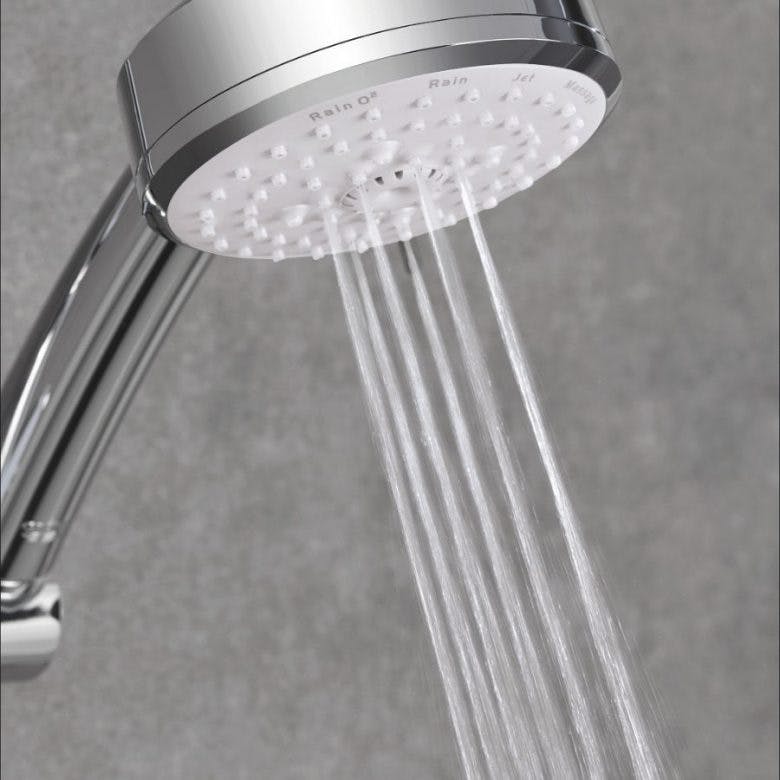
Grohe has a fine selection of quality water-saving shower heads. Rainshower® Icon, Eco and Solo hand-held showerheads all feature a water-saving Eco button on the handle – simply slide the button and you can reduce the water used for your shower by up to 40%. The good news is reducing your water consumption means you’ll save energy too!
Using less water means less energy is required to heat the water, so the benefits are twofold. We love that don’t we? Replace it yourself now. Here’s a handy guide.
2. Recycle
Sort your waste. Allot a recycling bin to separate recyclable materials and compost. Keep it simple by putting labels at your recycling containers and develop an easy routine for emptying trash and recycling.
By 2025, Clarins will use 100% recycled or recyclable product containers.
Also, when disposing of Clarins empty packaging, make sure to follow the instructions on how to use or recycle accordingly.
When you feel it’s a hassle, remember that by recycling you are doing your part in lessening deforestation and saving trees from being cut down.
3. Running full loads of laundry and dishes
Wait until you have a full load before using your washing machine or your dishwasher.
4. Turning the water off when brushing your teeth
Brush your teeth without the tap running as it uses up to nine litres of water a minute.
5. Integrate waterless beauty products into your beauty routine
Due to the anticipated water scarcity, beauty brands have been more committed to creating more waterless beauty products. Traditionally, beauty formulas are made of up to 80% water.
Instead of the traditional shampoo and conditioner, why not try looking at eco-friendly, zero plastic waste shampoo and conditioner bars like Ethique UK and store them in biodegradable storages made with bamboo and cornstarch, a practical way to stop your bars from washing away.
Swapping cheek tints with blush sticks or choosing a compact powder foundation over a liquid foundation is also a good start as waterless concept also makes products lighter to transport, meaning a lower carbon footprint.
Or try a dry facial cleansing method.
If you are up to it, use a product that encourages no water consumption such as Total Cleansing Oil, Micellar Water or Velvet Cleansing Milk which can then be wiped off with a reusable bamboo cloth. All these are effective to remove dirt, sweat, sebum, dead skin cells and pollution.
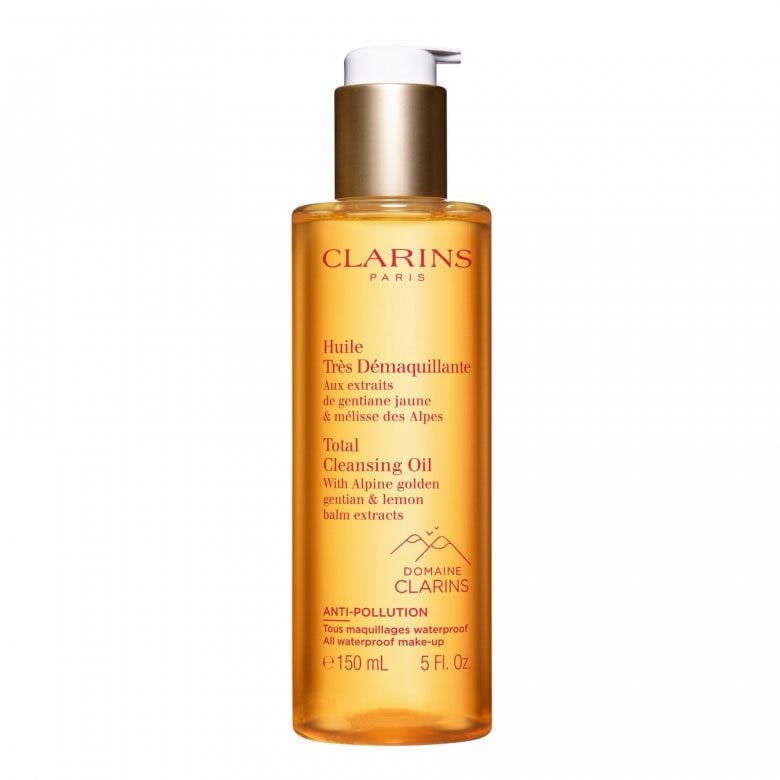
If washed and cared for correctly, most reusable pads will last you years. Expect up to 500 or 1,000 washes. Followed by your normal skincare routine: toner, serums and moisturiser and SPF (daytime).
6. Use and bring a reusable water bottle wherever you go
“When out and about, always keep a reusable bottle handy. This will prevent the need to purchase single-use plastic bottles and allow you to top up from the tap. This will keep you hydrated without contributing to pollution or water waste,” suggests Edinburgh based Amee Ritchie, Co-founder of S’wheat, the world’s first-ever reusable plant-based bottle.
A single-use plastic water bottle takes up to 450 years to break down in a landfill.
If you are one of the many who throw away their plastic, steel or glass reusable bottles only a few months after purchasing due to their metallic taste, breakage, foul smells and inability to be efficiently cleaned, then switch to something biodegradable that will decompose rather than dumping in landfills.

Beauty Daily loves S’wheat bottles. It is made from 100% plant: wheat straw and bamboo, and is suitable for both hot lattes or your lemon-infused iced cold water.
7. Shop local and visit your local farmers
“One of the easiest things I think we can do to reduce our water footprint is to shop locally and visit your local farmers market to reduce your water footprint, keep an eye on what’s in season in your area and do some homework on the producers that supply your favourite foods,” Ritchie suggests.
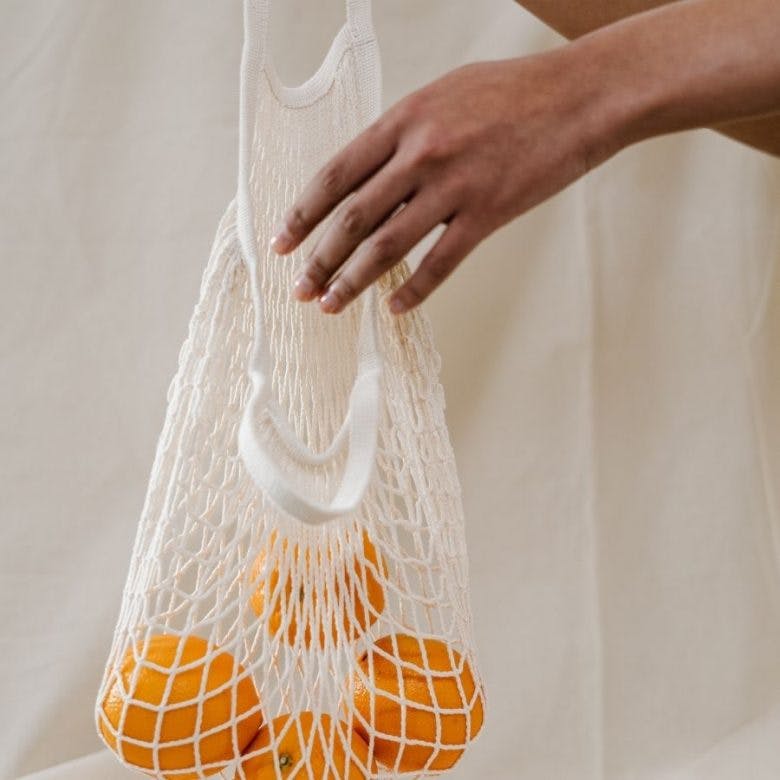
Use an eco-fabric shopping bag when grocery shopping.
8. Change your diet
Scientists suggest that cutting out meat is the single best way individuals can tackle the global water crisis.
So, the next time you crave filet mignon, think that beef is one of the most water-intensive proteins, needing 15,000 litres of water per kg. Opt for chicken instead, which has a lesser water footprint.
Try Meat Free Mondays, or choose which day of the week to go meatless.
Another way to reduce your water footprint is to eat less processed food. Experts say water is required at every stage of food production – refining, processing, canning, packaging. So eating fresh food means consuming less water, sugar, salt, preservatives and chemicals and it’s good for your health too. Win-win!
Read Next: Here’s What Happens To Your Skin When You Do Veganuary
9. Shop sustainably
“Becoming more aware of which garments require a lot of water (for example cotton) means that we can look at the brands we buy to see if they use recycled cotton or how they work with their water footprint in general,” advises Couffe.
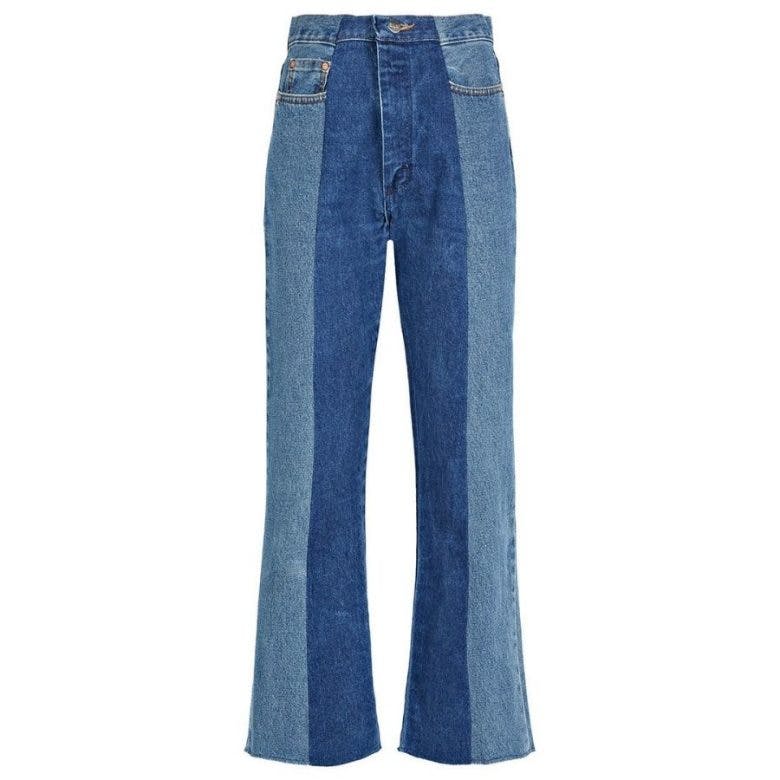
We love E.L.V Denim. This zero-waste denim brand is founded by fashion stylist Anna Forster which repurposes discarded and unwanted denim sourced from vintage warehouses around the UK and turns them into modern sophisticated pieces. Did you know that it takes 10,000 litres of water to make a new pair of jeans? At E.L.V. DENIM, they only use seven litres to wash the post-consumer denim waste.
10. Support climate change and sustainability projects
When you can, support climate change and sustainability projects.
Clarins has launched a limited-edition hand and nail treatment cream, with every purchase, a donation is made to support mangrove reforestation in Southern Thailand. Mangroves help reduce the effect of climate change by storing enormous amounts of CO2. Thus, helping keep the planet cool and increasing global water security.
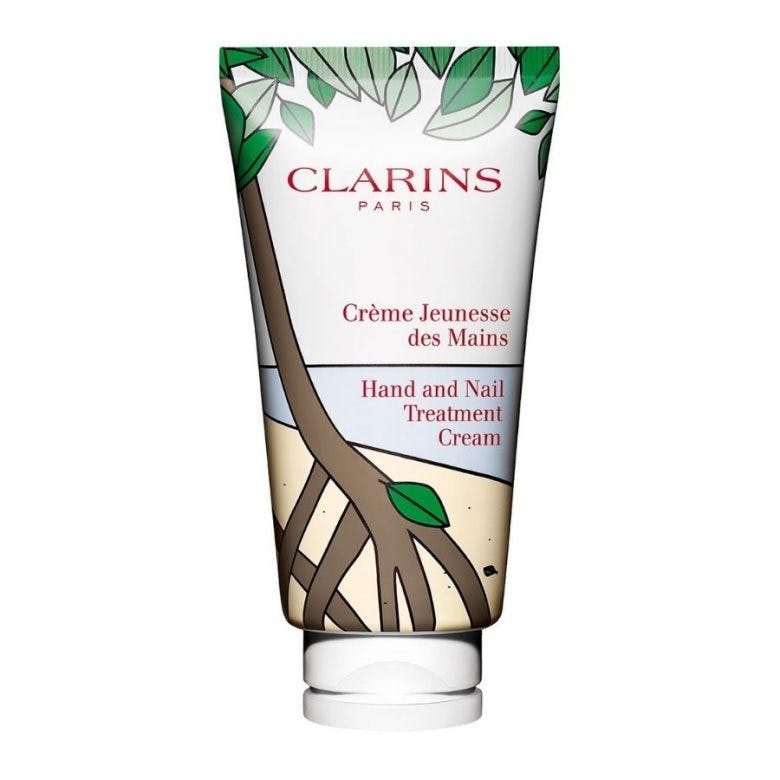
The packaging is made with 16% less plastic in the cap, and 100% reusable tube. The hand and nail treatment cream minimise the signs of ageing, all thanks to Sesame Oil and Japanese Mulberry extract.
Want to know your unique water footprint? Use this footprint calculator here. This will calculate your water consumption based on your country of residence and your own consumption pattern so you will have a better understanding of how you use water and, hopefully, make informed and conscious decisions moving forward.
Sign up for our newsletter
We will keep you in the loop for special offers, exclusive gifts and product news.
Products You Might Like
BEST-SELLER
BEST-SELLER

